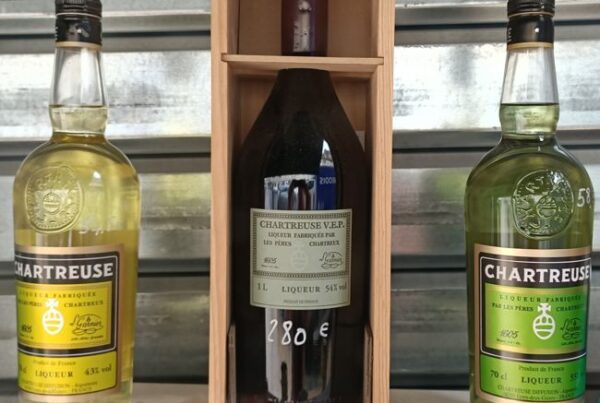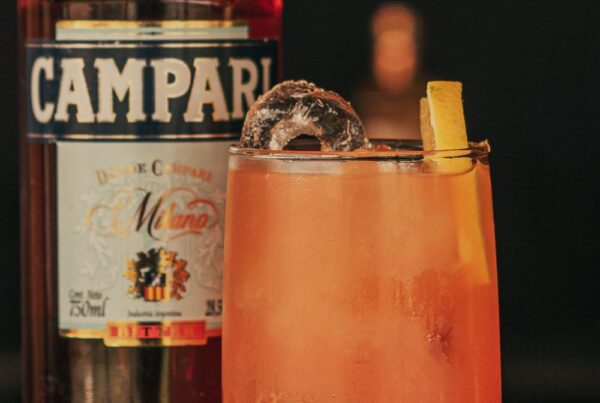In this article, you will learn what vodka is made from and how it is made.

Contents
What is vodka made from?
Vodka can be produced anywhere in the world and can be distilled from any starch- or sugar-rich plant.
The more traditional raw materials used to make vodka are grains like barley, corn, rye and wheat, but potatoes, rice, grapes and all manner of materials, including cactus, can also be used.

How vodka is made
The ingredients and how often it’s distilled can affect the taste and quality of vodka.
Vodka is made through a simple process that involves fermentation, distillation, and dilution:
Fermentation
The process starts with a base ingredient like grains (wheat, rye, or corn), potatoes, or sometimes fruit.
These ingredients are mixed with water and yeast.
The yeast converts the sugars in the ingredients into alcohol, creating a liquid called a mash.
Distillation
The mash is then heated in a still.
Alcohol evaporates at a lower temperature than water, so the alcohol vapors rise, separating from the rest of the liquid.
These vapors are collected and condensed back into liquid form, creating a purer alcohol.
Vodka is usually distilled multiple times to remove impurities.
Dilution
After distillation, the alcohol content is very high, often over 90%.
Water is added to dilute the vodka down to about 40% alcohol by volume (ABV).
Filtering (optional)
Some vodkas are filtered through charcoal or other materials to remove any remaining impurities and to smooth the taste.
Vodka alcohol percentage
During production, vodka is initially distilled to a high strength of at least 95% abv. This is achieved using a column still.
Distilling to such a high strength ensures that little of the character of the base material (barley, potatoes etc.) remains.
Vodka is also often filtered through charcoal to remove any remaining undesirable flavor and impurities. The strength is then reduced by adding water to around 40% abv.
Vodka styles/types
Most vodkas are designed to taste as neutral as possible. The neutral taste is what makes vodka so versatile and popular.
It is ideal for making vodka cocktails and mixed drinks.
However, some vodkas are more characterful, such as some Polish vodkas.
The flavors are still delicate compared with that of brandy or whiskey, but hints of the base material are detectable on the nose and palate.
Does vodka go bad?
No, vodka does not go bad.
Vodka is a distilled spirit with a high alcohol content, usually around 40% ABV (alcohol by volume), which prevents bacteria and mold from growing.
As long as it’s sealed, vodka has an indefinite shelf life.
However, once opened, its quality may gradually degrade over time due to exposure to air, light, and temperature changes, which can slightly alter the flavor. But it will not spoil or become unsafe to drink.
Keep vodka tightly sealed and store it in a cool, dark place to maintain its best quality.
What ingredients the best vodkas are made from
Here is a list of what some of the most popular vodka brands are made from:
- Absolut vodka is made in Sweden from ‘hardy wheat’.
- Belvedere vodka is made in Poland from rye.
- Smirnoff vodka is made in Washington from non-GMO corn.
- Grey Goose vodka is made in France from ‘soft winter wheat’.
- Ketel One vodka is made in The Netherlands from wheat.
- Stoli vodka is made in Latvia from rye.
- Tito’s vodka is made in Texas from corn.
Vodka made with potatoes
If you are curious to try potato vodka there are many excellent brands to choose from, including:
- Woody Creek made in Colorado
- Blue Ice made in Idaho
- Chase made in England
- Luksosowa made in Poland
Flavored vodkas
Flavored vodkas have become more popular in recent years.
Stoli was the first brand of vodka to introduce flavored vodkas in 1962 (pepper and honey & herb).
Flavors can be added to vodka in different ways:
Essences: Artificial flavors are added to the vodka
Maceration: The flavoring ingredients (fruit, herbs, spices, vanilla) are soaked in the vodka.
Redistillation: Vodka is redistilled with the flavoring ingredients.






